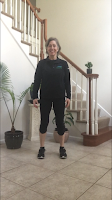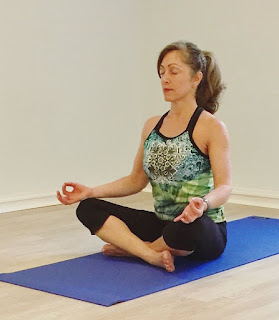Strength Training for Osteoporosis: Building Better Bones
Osteoporosis is often dubbed the “silent disease,” as it progresses without noticeable symptoms until a fracture occurs. It affects millions of people worldwide, primarily women, and is characterized by weak and brittle bones. With the aging population, it’s crucial to address osteoporosis, especially among those at higher risk. This blog will explore the role of strength training in combating bone density loss, provide statistics, and recommend effective exercises.
Understanding Bone Density Loss
Bone density naturally begins to decrease as we age, with significant differences based on sex. According to the National Osteoporosis Foundation:
- Women: Bone density typically starts to decline sharply after menopause, around the age of 50. Post-menopausal women can lose up to 20% of their bone density within the first five to seven years after menopause.
- Men: Although men experience bone density loss more gradually, they usually start losing bone mass around the age of 60. By the age of 70, many men have lost significant density, and 1 in 4 men over 50 will break a bone due to osteoporosis.
Understanding these statistics can emphasize the importance of proactive measures, such as strength training, to help improve bone density.
The Benefits of Strength Training for Bone Density
Strength training is not just about building muscle; it plays a vital role in increasing bone density. Here are key benefits:
- Increased Bone Mineral Density (BMD): Research has shown that resistance training can lead to increases in BMD, reducing the risk of fractures.
- Improved Balance and Coordination: Strength training enhances muscle control, reducing the risk of falls, which can lead to fractures, especially in older adults.
- Enhanced Muscle Mass: Increased muscle mass supports bone health by exerting pressure on the bones, promoting bone formation and helps to support and stabilize joints.
- Bone Quality Improvement: Strength training can improve the microarchitecture of bone tissue, enhancing overall bone quality.
- Better Posture and Core Strength: A strong core supports proper alignment and reduces the load on the spine and other joints, decreasing the risk of injuries.
Effective Exercises for Improving Bone Density
Both strength training and cardiovascular exercises can significantly benefit bone health. Here are specific exercises to consider:
Strength Training Exercises
- Weight Lifting:
- Squats: Excellent for building leg strength, targeting the thighs and hips. Use dumbbells or a barbell.
- Deadlifts: Focus on your hamstrings, glutes, and lower back. Maintain proper form to avoid injuries!
- Resistance Band Exercises:
- Chest Press: Stand on a resistance band and press it forward to strengthen the chest and shoulders.
- Rows: Use a band to pull back, working your back and upper arms, which is essential for posture.
- Bodyweight Exercises:
- Push-ups: Strengthen the upper body utilizing your body weight. Can be modified to knees or wall push-ups for beginners.
- Lunges: Work on balance and strengthen the lower body muscles.
- Functional Movements:
- Step-ups: Step onto a low platform alternating legs, which helps build strength and balance.
- Planks: Engages multiple muscle groups, promoting core stability.
Cardiovascular Exercises
While strength training is crucial, incorporating weight-bearing cardiovascular exercises can also enhance bone density:
- Walking or Hiking: Regular walking, especially uphill, is excellent for increasing bone density in the lower body.
- Jogging or Running: These high-impact activities are effective for stimulating bone growth.
- Dancing: Provides a fun, weight-bearing workout while improving coordination and balance.
- Jump Rope: This is an effective way to promote bone health while also improving cardiovascular fitness.
Safety Considerations
These exercises may not be appropriate for all. Before starting any new exercise program, especially for individuals with osteoporosis, it’s essential to consult a healthcare professional or physical therapist. They can provide personalized guidelines and modifications tailored to individual needs.
Additionally, focus on proper form and start with lighter weights to avoid strains. Gradually increase resistance as your strength improves, and consider working with a trainer who understands osteoporosis.
Conclusion
Strength training offers a powerful, proactive approach to combat osteoporosis and improve bone density. By incorporating a mix of resistance training and weight-bearing cardio exercises into your routine, you can significantly enhance bone health and overall well-being.
Remember, it’s never too late to start moving! Incorporate these exercises into your weekly routine, and you’ll be on the path to building better bones and a healthier life. Stay active, stay strong!
Blog Post by FitPlan Instructor Ally Wilson

















